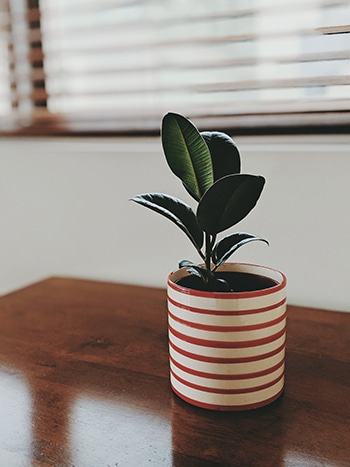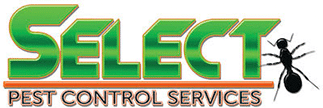PEST CONTROL DONE RIGHT
Controlling Common Pests on Indoor Plants

Indoor plants bring life, color, and a breath of fresh air to our living spaces. However, the cozy haven we create for our beloved houseplants can sometimes attract unwanted visitors—pests. Striking the right balance between enjoying the benefits of indoor plants and preventing pest infestations is crucial. In this blog, we’ll examine the relationship between indoor plants and their common pests, providing tips to ensure you can keep your beautiful plants healthy while eliminating pests.
The Appeal of Indoor Plants
Indoor plants offer numerous benefits, from enhancing aesthetic appeal to improving air quality and promoting well-being. They have the power to transform our homes into tranquil retreats, providing a connection to nature and reducing stress. However, the conditions that make indoor environments ideal for plants can also attract pests seeking a cozy home.
Common Pests Affecting Indoor Plants
1. Spider Mites
These tiny arachnids thrive in dry conditions and can cause stippling, discoloration, and webbing on plant leaves.
2. Aphids
Aphids are small, sap-sucking insects that can quickly reproduce and damage plant foliage. They come in various colors, including green, black, and red.
3. Fungus Gnats
Fungus Gnats are little flies that lay eggs in the soil. Larvae feed on organic matter and plant roots, leading to weakened and yellowing plants.
4. Scale Insects
These common pests attach themselves to plant stems and leaves, sucking sap and causing yellowing or wilting.
5. Mealybugs
These soft-bodied insects are covered in a waxy substance. They feed on plant sap, causing yellowing and distorted growth.
Prevention Strategies for Common Pests
1. Start with Healthy Plants
Begin your indoor garden with healthy plants from reputable sources. Inspect plants for signs of pests before bringing them home.
2. Isolate New Additions
Quarantine new plants for a few weeks before introducing them to your existing collection. This allows you to monitor for signs of pests without risking an infestation.
3. Optimal Growing Conditions
Provide the right conditions for your plants, including appropriate light, water, and humidity levels. Healthy plants are more resistant to pests.
4. Regular Inspection
Routinely inspect your plants for any signs of common pests, including the undersides of leaves and in the soil. Early detection allows for prompt action.
5. Natural Predators
Introduce natural predators like ladybugs or predatory mites to keep pest populations in check. These beneficial insects can be purchased or attracted to your indoor garden naturally.
Dealing with Common Pests
1. Spider Mites
- Increase humidity to discourage spider mites.
- Regularly hose down plants to remove dust and discourage mites.
- Use insecticidal soap or neem oil for control.
2. Aphids
- Spray plants with a strong stream of water to dislodge aphids.
- Introduce natural predators like ladybugs.
- Use insecticidal soap or neem oil for severe infestations.
3. Fungus Gnats
- Allow the soil to dry between watering to discourage fungus gnat larvae.
- Use sticky traps to catch adult gnats.
- Apply a soil drench containing beneficial nematodes for larvae control.
4. Scale Insects
- Gently scrub these common pests off leaves with a soft brush or cloth.
- Use insecticidal soap or neem oil for control.
- Prune and dispose of heavily infested plant parts.
5. Mealybugs
- Remove mealybugs manually with a cotton swab dipped in rubbing alcohol.
- Introduce natural predators like ladybugs.
- Use insecticidal soap or neem oil for control.
Natural Remedies for Controlling Common Pests on Indoor Plants
1. Neem Oil
Neem oil is an effective and organic solution that disrupts the life cycle of pests and provides a protective barrier on plant surfaces.
2. Insecticidal Soap
Mild insecticidal soaps can be used to control soft-bodied common pests like aphids and spider mites. Ensure the soap is specifically formulated for plants.
3. Diatomaceous Earth
Diatomaceous earth is a natural powder that can be sprinkled on the soil surface to control crawling insects. It works by dehydrating and damaging the exoskeleton of pests.
4. Essential Oils
Certain essential oils, such as peppermint, eucalyptus, and tea tree oil, can be diluted and used as natural insect repellents. Apply sparingly to avoid harming plants.
Maintaining Plant Health
1. Proper Watering
Overwatering can create conditions favorable to common pests and diseases. Water plants only when the soil is dry to the touch.
2. Adequate Light
Place plants in locations that match their light requirements. Healthy, well-lit plants are less susceptible to pests.
3. Pruning
Regularly prune dead or damaged plant parts to maintain overall plant health and reduce hiding spots for pests.
4. Well-Draining Soil
Use well-draining soil to prevent waterlogged conditions, which can attract pests. Consider adding perlite or sand to improve drainage.
Achieving a harmonious balance between keeping your indoor plants healthy and controlling common pests requires a combination of preventive measures, regular inspections, and effective remedies. By starting with healthy plants, creating optimal growing conditions, and employing natural pest control methods, you can enjoy the benefits of a green interior without the threat of destructive pests. For more serious or persistent infestations, seeking professional pest control services is highly recommended. Select Pest Control Services offers expert solutions to eliminate pests from your indoor plants and ensure a healthy environment for your greenery. Don’t let pests wreak havoc on your beloved plants – contact Select Pest Control Services today for reliable assistance in protecting your indoor garden.
